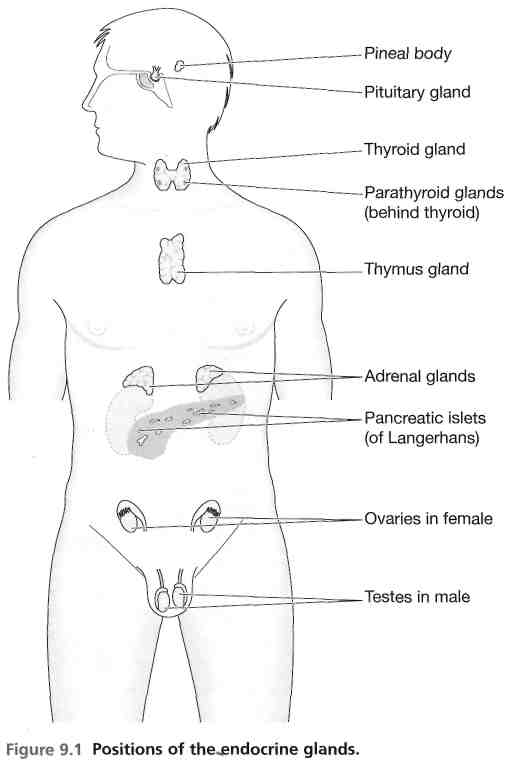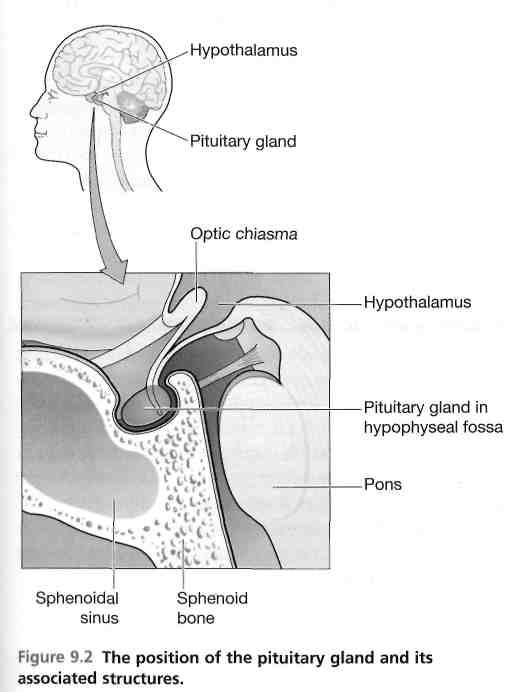
The endocrine system

The endocrine system consists of glands widely separated from each other with no direct links (Fig. 9.1). Endocrine glands consist of groups of secretory cells surrounded by an extensive network of capillaries that facilitates diffusion of hormones (chemical messengers) from the secretory cells into the bloodstream. They are commonly referred to as the ductless glands because the hormones diffuse directly into the bloodstream. The hormone is then carried in the bloodstream to target tissues and organs that may be quite distant, where they influence cellular growth and metabolism.
Homeostasis of the internal environment is maintained partly by the autonomic nervous system and partly by the endocrine system. The autonomic nervous system is concerned with rapid changes, while hormones of the endocrine system are mainly involved in slower and more precise adjustments.
The endocrine system consists of a number of distinct glands and some tissues in other organs. Although the hypothalamus is classified as a part of the brain and not as an endocrine gland it controls the pituitary gland and has an indirect effect on many others. The endocrine glands are shown in Figure 9.1.
Box 9.1 Examples of lipid-based and peptide hormones |
|
Lipid-based hormones |
Peptide hormones |
Steroids |
Adrenaline (epinephrine), |
e.g. glucocorticoids, |
noradrenaline (norepinephrine) |
mineralocorticoids |
Insulin |
Thyroid hormones |
Glucagon |
|
|
The ovaries and the testes secrete hormones associated with the reproductive system after puberty. Their functions are described in Chapter 18.
When a hormone arrives at its target cell, it binds to a specific area, the receptor, where it acts as a switch influencing chemical or metabolic reactions inside the cell. The receptors for peptide hormones are situated on the cell membrane and those for lipid-based hormones are inside the cell. Examples are shown in Box 9.1.
The level of a hormone in the blood is variable and self-regulating within its normal range. A hormone is released in response to a specific stimulus and usually its action reverses or negates the stimulus through a negative feedback mechanism (see p. 5). This may be controlled either indirectly through the release of hormones by the hypothalamus and the anterior pituitary gland, e.g. steroid and thyroid hormones, or directly by blood levels of the stimulus, e.g. insulin and glucagon.
The effect of a positive feedback mechanism is amplification of the stimulus and increasing release of the hormone until a particular process is complete and the stimulus ceases, e.g. release of oxytocin during labour (p. 6).
I n
addition to the hormones that have the characteristics and actions
outlined above there are also other hormones that do not travel to
remote target organs but act locally, and these are considered
briefly at the end of the chapter.
n
addition to the hormones that have the characteristics and actions
outlined above there are also other hormones that do not travel to
remote target organs but act locally, and these are considered
briefly at the end of the chapter.
